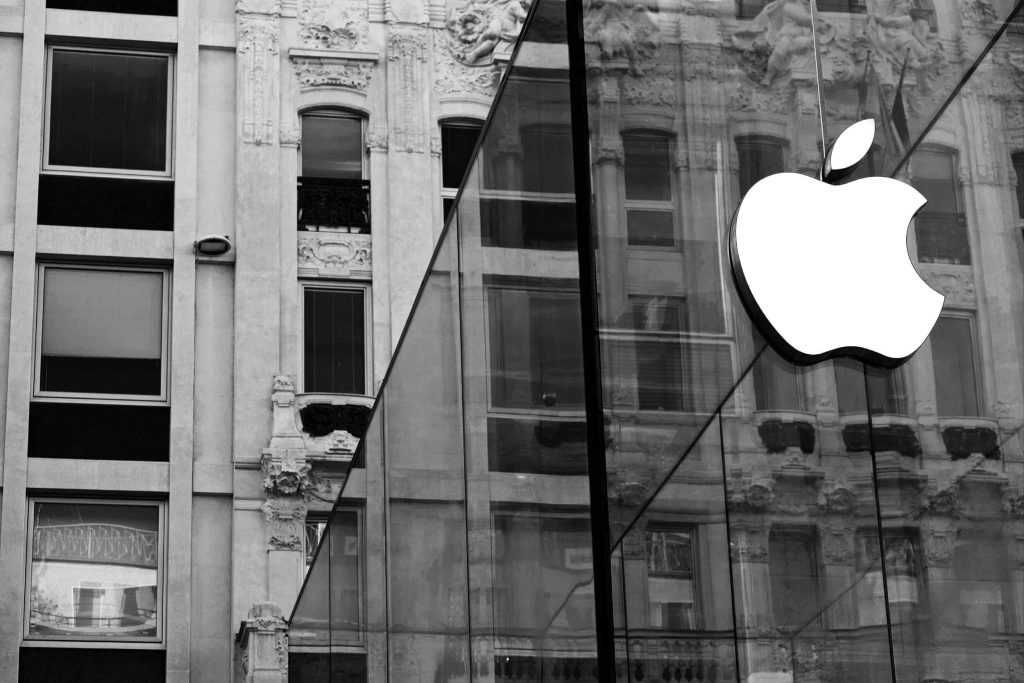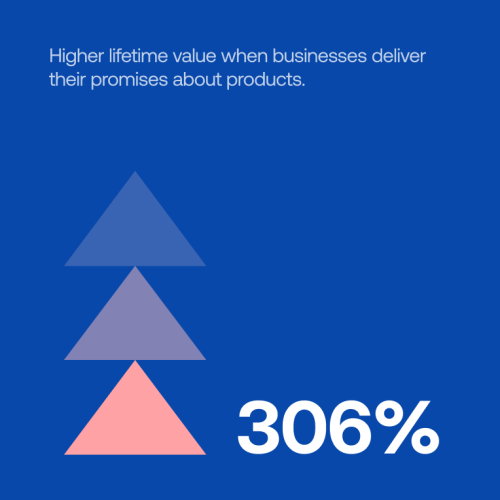We all need to grow and change as we move forward; the same goes for brands.
Whether it’s a complete makeover of the brand with new products and services or simply just tweaking a logo’s color scheme. It’s all considered in rebranding.
? Read Creating a Marketing Strategy that Works: Benefits, Steps, Tools
Rebranding is important in this day and age as it reminds customers that their favorite brands are still relevant and in business. However, you should never take rebranding lightly. This is because your company’s reputation is at stake.
But before we jump into rebranding and all its elements, let’s first find out.
What is Branding?
Branding is a process of creating a strong perception and differentiation of products and services in the minds of potential customers. That includes logo designs, tone of voice, and other visual elements and marketing materials to make the brand distinct from its competitors.
In fact, studies have shown that brand consistency can lead to a 10 to 20% revenue increase.
What is Rebranding?
Rebranding is done when the organization partially or completely changes its marketing strategy and creates a new brand identity. That includes making changes to the brand logo, a new name, a symbol, and other related marketing materials. The goal of rebranding is to change the way consumers, investors, prospects, and other stakeholders perceive that brand.
Types of Rebranding
Partial Rebranding
Partial rebranding is a marketing strategy where some aspects of your brand are changed. For instance, you could freshen up your same ol’ company’s logo or change the typeface of your brand while other marketing materials remain unchanged.
Total Rebranding
Total rebranding involves a complete brand makeover, whether it’s the logo, color scheme, typeface, brand name, and everything in between. This mainly happens when there’s a merger of two or more companies or a dynamic shift toward a company’s vision, mission, and values.
Who Succeeded in Rebranding Products?
Dropbox

Initially, Dropbox was launched as a file-storage and file-sharing service platform where you can upload and share files. That was back then in 2007. But in 2017, it has become so much more where it offers an open platform for teams to collaborate. So, they freshen up their logo to reflect their evolution towards providing a full suite of integrations, tools, and APIs.
Airbnb

Airbnb started as a mere lodging business that was an alternative to hotels. Now, it has become the largest online vacation rental marketplace where tourists can come from far and wide and live like locals.
The company’s journey toward its new logo also had its fair share of controversies. However, there was no stopping their success. Even though their previous logo was well-thought-out, they transitioned to their new logo, Bélo, which is “the universal symbol of belonging.” It requires something much more than a simple font. So their new logo was created to showcase their new identity, which resulted in massive success throughout.
Kodak

Sometimes subtle changes in the logo, like the one with Dropbox, are all you need to make an impact. However, at other times you might need to reuse old branding that resonates with the brand’s legacy. The same case is with Kodak, which was bankrupt in 2012 and had to rebrand itself to showcase its relevance.
The once-popular photographic film-producing company embraced its roots by savvily using its original branding in its redesign. They incorporated the recognizable color scheme of their redesigned logo to make their brand more relevant and evoke an emotional connection with their audience.
Who Failed With Rebranding Products?
Gap

We have discussed all the top three reasons for rebranding, but GAP didn’t fall in any of them. GAP changed its logo for entirely no reason at all. As a result, they faced a huge outrage from loyal customers who were quite fond of their old logo. So within six days, they went back to their original logo and haven’t changed it again since.
Mozilla Firefox

Firefox ranks amongst the most popular open-source web browsers on the internet. However, back in 2017, they decided to change their logo to spelled “moz://a.” Their sly use of URL pieces of coding instead of the alphabet backfired. Most critics said that the logo was outdated, while others questioned their credibility as a web browsing company.
Tropicana

Tropicana, known for its fresh orange juices, made the mistake of a lifetime when it redesigned its logo. It contains everything but the most important element of their product – orange. Instead, they used a glass of an orange drink. Due to this blunder in rebranding, the orange drink producer suffered a loss of about $30 million dollars.
Rebranding Products Tips
1. Reconsider your brand positioning
What, why, and how are the three important questions to ask yourself when you’re reconsidering your brand positioning. You should never take your current messages for granted, as they can change as your brand scales and grows.
Here are some of the essential components you need to consider before you make any changes to your brand positioning:
Vision
Vision is the what of your brand, like what are you trying to achieve with your brand? The vision should be the centerpiece of your brand. You should have a thorough understanding of your vision as it steers the ship of your brand. With time, you may have to change its course, and that’s okay as long as everyone on your team or ship knows your vision or the course you’re heading.
Mission
The mission is the how of your company moving forward to achieve your vision. It’s the map or compass of your brand that provides direction to achieve your vision. Your vision may be the same, but what course you’re going to take matters in mission. So they should be revised and reevaluated in order to find the best course to take to achieve your vision.
Values
Values are the why of your brand, like why you’re heading towards achieving your vision and why you’re taking that course which is your mission. However, as you’re starting to achieve your goals and expand your brand, your values might also change over time. So you need to constantly revise your values in order to showcase what your company currently stands for.
Brand Voice
Since your vision, mission, and values will change in rebranding, you also need to make changes in how you’ll convey these components of your company to your audience. Your tone, vocabulary, and voice should be changed and uniform in all modes of communication. In other words, if you’re changing your statements, then you’ll also have to change your approach to conveying those statements to your audience.

2. Conduct Thorough Market Research
Rebranding is equal parts art and science, so conducting thorough market research is crucial. That includes researching focus groups and analyzing data to find out what your competitor does and what you don’t. Also, research who’s buying from you and who’s going to your competitors.
You also need to reevaluate what your true value proposition is and how your product or service can stand out from the competition. Research what’s trending and ensure to adopt it if it aligns with your vision and mission.
The main goal of your rebranding is to look fresh and stay relevant with your audience for the long haul. Once you’ve established that, you’re all set to rebrand your company and connect with your customers.
3. Conduct A SWOT Analysis of your Brand
“SWOT” is a fancy acronym for conducting a thorough analysis of the internal and external factors that impact your brand. That includes understanding your strengths and weaknesses, opportunities, and threats.
In order to get the most out of your SWOT analysis, you need to gather and involve the right people either in a physical or a virtual room by hosting a teleconference. Here’s what you need to know and do:
Strengths
Every brand has at least one strength under its arsenal that helps them get ahead of its competitors. So you need to identify your brand’s unique strengths, which your competitors don’t have or excel in. You should always conduct a SWOT analysis from the positive aspect, which is your strength. However, once you know them, you should also look at the other side of the coin.
Weaknesses
Weakness is not about self-deprecation but more about self-reflection. That, in turn, helps you identify your brand’s vulnerabilities. Some of the areas you need to look at are the processes for productivity and where your leads couldn’t convert into customers. Honesty is the key to conducting a proper weakness analysis. Otherwise, it will hurt your brand in the long run.
Opportunities
The above are the internal factors that you need to consider. Now comes the first external factor, which is looking for opportunities for growth. They could include leveraging new and innovative technologies and products or services. You could also look for potential customers and find solutions to your weaknesses that could help you scale and expand your business.
Threats
Evaluating your threats is a bigger picture. Here you need to identify new competitors that could arise and take away your business. You also have to find out new trends and consumer behaviors, review your sustainability processes, and explore the impact of new technologies. All of these external factors could have disastrous consequences if not addressed quickly.
4. Reestablish Your Brand Identity Using Brand Guidelines
Brand guidelines are essential if you want to reestablish your brand identity. In this way, your brand will be consistent after the transition.
Some of the major elements of brand identity are brand overview, logo, and color palette. They are created using brand guidelines as they make it easy for the audience to see, recognize, and remember your brand.
Brand Overview
What defines your brand? What are the mission and vision of your brand? What values does it stand for? These are some of the important questions you need to ask yourself when creating brand guidelines to reestablish your brand identity.
Logo
A company logo is a crucial element in your brand guidelines. This is because logos are the visual component that represents your brand identity and the first thing your audience sees and remembers. Consistency is the key when using logos everywhere for your brand identity.
Color Palette
Color packs a punch on your brand. Ensure to have a highly detailed color palette. The brand guidelines clearly indicate which colors to use and avoid and where to use them. This way, your brand colors will be properly applied, no matter whether they are—on the web, in print, or in any other media.
Typography
The fonts and typeface you use for your brand identity should be consistent and properly documented in your brand guidelines. From headers, quotes, copy, and everything in between need the right choice of coloring, sizing, and style.
5. Track Your Brand Sentiments
Your job isn’t done with only designing all the new elements of your rebranding; you also need to track your brand sentiments. The best way to do this is by getting feedback from customers. They’ll be able to tell you whether they get inspired by your mission, vision, and values based on what they see in your rebranding.
Tracking brand sentiments is also crucial throughout the entire process of rebrand launch. For instance, before the launch, feedback from your customers will help you reshape your strategy. That, in turn, enables you to come up with a new message that resonates with your target audience.
Sometimes your customers’ feedback is even more valuable than your own SWOT analysis. This is because you’re getting in-depth information from the horse’s mouth. So, if you don’t receive positive feedback, then it’s time to get back to the drawing board and start all over again until you get it right.
Tools for Successful Rebranding Products
Canva for Creating Visual Elements

Canva is a well-known online design and publishing platform for creating visual elements. It provides powerful tools to empower its users to create and share creative designs.
Its Curved text feature lets you create beautifully-arched text in just a few clicks. It allows you to design logos and create Venn diagrams and pie charts with curved text labels. You can also make eye-catching portraits with a unique accent.
With its Photo effects feature, you can beautify your images. You can apply soft photo filters, blur sliders, and black-and-white filters to give your photos a professional look.
It’s an outstanding tool to create seamless, engaging designs.
Vidyard for Video Marketing

Vidyard is a powerful video marketing tool to create, promote, and track your video content. It provides the perfect combination of personalized insight and analytics to help businesses to create audience-focused content.
Its Video Creation feature lets you record videos up to an hour long, screen recording, and combine multiple videos into a single playlist. You can also generate 3-second GIF animated previews for emails.
It also has a Video Analytics feature that has powerful analytics dashboards for you to get insights into your video performance metrics. It offers integrations with CRM or MAP to report on the ROI of your videos.
RingCentral for Virtual Events

RingCentral MVP is an all-in-one platform for team messaging, video meetings, and phone calls. You can leverage its robust video conferencing features to host virtual events with up to 100 participants. If you upgrade to its premium plan, you can invite up to 200 participants.
It offers a hassle-free online event experience without the need to download the app. All you need to do is share the link with your attendees and allow them to join directly from their web browsers.
During the virtual event, you can use its whiteboard feature and screen-sharing feature to make your presentation more engaging.
Determ for brand monitoring

Determ is a user-friendly online monitoring tool to monitor your brand sentiments. It helps you to make better business decisions by delivering relevant information.
You can use it to track social media, websites, and forums, as it provides real-time tracking across 100+ million online sources. It has the most advanced search and unlimited filtering options to identify different opportunities.
It also offers the most customizable and in-depth reporting on the market to monitor your brand sentiments.
Conclusion
Rebranding is an exciting journey for companies looking to make the most of their identity and purpose. With a thoughtful approach, it allows businesses to develop into unified entities with control over how they are seen in the public eye.
Successful rebranding strengthens your brand identity. It leaves an everlasting impression on your customers, who, in turn, give positive online feedback. The higher the engagement rate across the channels, the more successful your brand gets.
Mary Paulene Omae San Miguel is a Senior Content Editor for RingCentral, a leading provider of global enterprise cloud communications, video meetings, collaboration, and contact center solutions. She has a Bachelor’s degree in Journalism and a great passion for learning foreign languages. Connect with her on LinkedIn.






